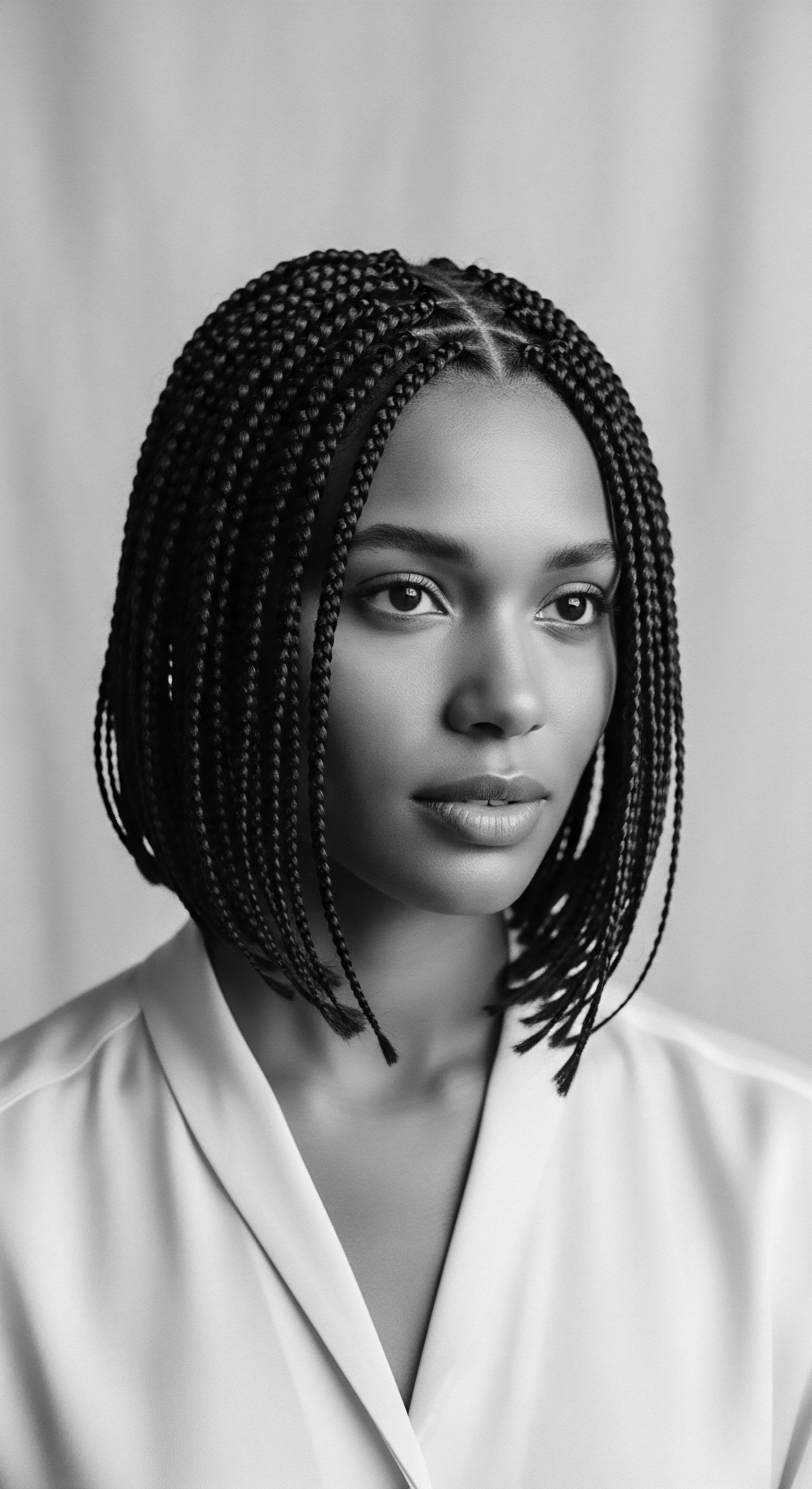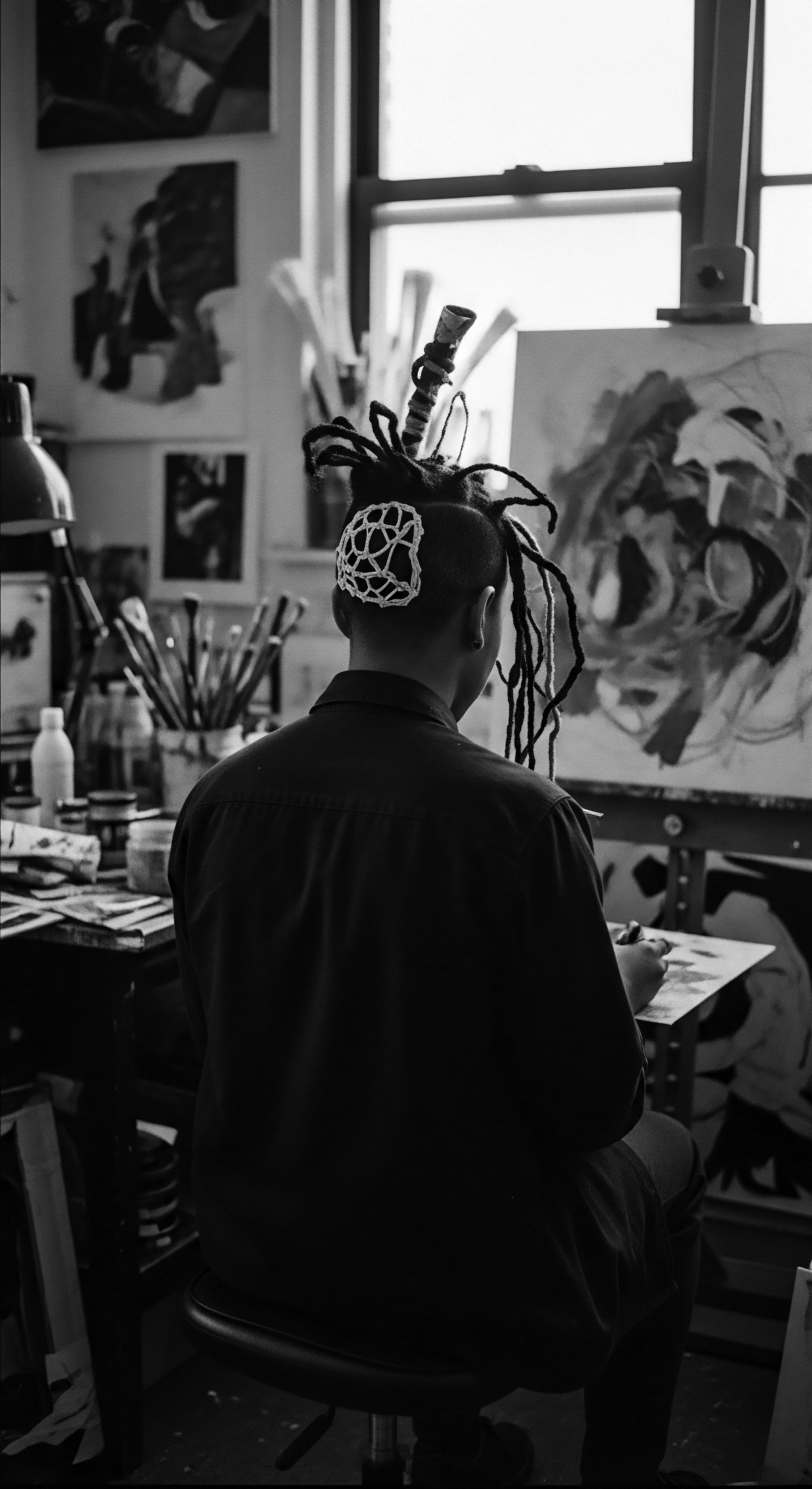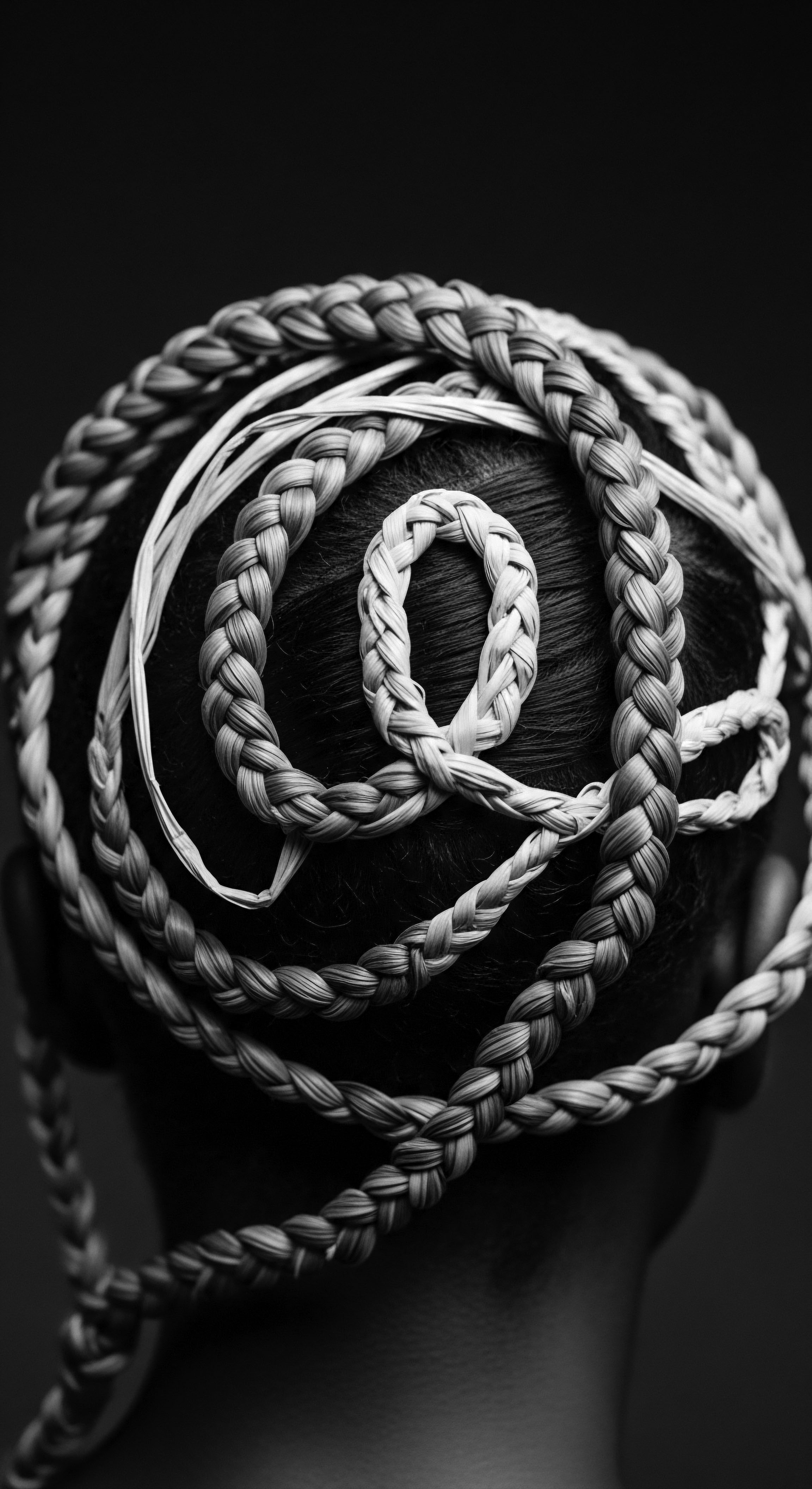
Roots
To truly comprehend the venerable role of traditional oils in the care of textured hair within arid landscapes, we must first turn our attention to the very fiber of the hair itself—a living memory, a chronicle of resilience. For generations, before the advent of industrial formulations, ancestral communities understood deeply the intrinsic thirst of textured strands, a thirst often amplified by the relentless sun and parched winds of dry climates. These communities, observant and ingenious, looked to the botanicals of their homelands, discerning the rich emollients and protective agents that the earth generously provided.
The story of these oils is not merely one of cosmetic application; it is intertwined with the biological reality of textured hair. Unlike straight hair, the elliptical shape of a textured hair strand, with its twists and turns, means that natural sebum struggles to descend along its length. This structural reality makes textured hair inherently more susceptible to dryness, especially when confronted by low humidity environments.
Ancient practices, refined over millennia, sought to counteract this predisposition by providing external moisture and sealing agents. They understood, intuitively, what modern trichology now affirms ❉ a healthy cuticle, lubricated and sealed, is a strong cuticle, capable of retaining the precious moisture it holds.

Why Does Textured Hair Seek Oils in Dryness?
The very architecture of a textured strand offers both its magnificent strength and its unique vulnerability. Its coils and curves, while visually striking and wonderfully expressive, create numerous points where the cuticle can lift, allowing moisture to escape readily. In dry climates, where the ambient humidity offers little solace, this natural tendency becomes a significant challenge.
The air itself draws hydration from the hair, leading to brittleness, breakage, and a dull appearance. Traditional oils, derived from plants that themselves endured harsh conditions, offered a powerful shield against this environmental assault.
These oils functioned on several levels. Some, like jojoba oil , closely mirrored the composition of natural sebum, providing a layer of biomimetic lubrication. Others, such as shea butter , formed a more occlusive barrier, locking in moisture and defending against external stressors.
The wisdom was in the application, often a patient, rhythmic ritual, ensuring every part of the strand received its protective coating. This wasn’t just about appearance; it spoke to the fundamental health and preservation of hair as a symbol of vitality and identity.

Ancestral Botanical Knowledge
The relationship between humanity and the plant kingdom has always been one of profound interdependence, especially in areas where survival depended on deep environmental literacy. In many parts of Africa, the Middle East, and indigenous communities in the Americas, a sophisticated understanding of local flora developed over countless generations. This knowledge allowed people to identify specific plants whose seeds, fruits, or nuts yielded oils with exceptional properties for hair and skin.
Consider the Baobab tree , often called the “Tree of Life,” found across the dry savannas of Africa. Its oil, extracted from the seeds, is light yet deeply penetrating, providing a source of fatty acids and vitamins that nourish the hair shaft. For communities residing in areas like the Sahel, where water is scarce and the sun relentless, the baobab offered not just shade and sustenance, but also a potent remedy for parched hair.
Similarly, in the arid regions of North Africa, the argan tree yielded an oil renowned for its restorative qualities. These weren’t random discoveries; they were the culmination of systematic observation, trial, and the oral transmission of knowledge from elder to youth.
The nuanced geometry of textured hair, inherently more prone to dehydration, finds its historical counterpoint in the protective embrace of ancestral plant oils.
| Traditional Oil Shea Butter |
| Geographical Origin West Africa (Sahelian belt) |
| Traditional Oil Argan Oil |
| Geographical Origin Morocco (Southwestern arid plains) |
| Traditional Oil Baobab Oil |
| Geographical Origin Sub-Saharan Africa (dry savannas) |
| Traditional Oil Jojoba Oil |
| Geographical Origin North America (Sonoran, Mojave deserts) |
| Traditional Oil Moringa Oil |
| Geographical Origin India, East Africa (dryland regions) |
| Traditional Oil These botanical legacies from dry lands reflect centuries of discerning wisdom in hair preservation. |

Ritual
The application of oils to textured hair in dry climates was rarely a hurried, transactional act. It was often a ritual, steeped in intention, community, and the quiet passing down of wisdom. These rituals were moments of care, connection, and continuity, where the physical act of nurturing hair became a conduit for cultural expression and the reinforcement of familial bonds. The techniques employed were not merely about distributing the oil; they were extensions of a deep understanding of hair’s fragility and its capacity for strength.
Consider the practice of hair oiling in many African communities. It was common for mothers, grandmothers, or aunts to gather young girls for elaborate hair sessions. During these times, traditional oils would be gently warmed, perhaps infused with herbs, and then massaged into the scalp and along the hair strands.
This was more than just a cosmetic routine; it was a time for storytelling, for teaching cultural values, and for transmitting the lore of hair care that had sustained generations. The very act became a protective style in itself, preparing the hair for braiding, twisting, or coiling, all designed to preserve moisture and length in challenging environments.

Ceremonial Hair Traditions
Across diverse cultures, hair has held symbolic significance, often linked to spiritual beliefs, social status, and rites of passage. In ancient Egypt, for example, elaborate hairstyles were common, and their preservation in the hot, dry climate was crucial. Archaeological findings and textual evidence suggest the widespread use of various oils and fats, such as castor oil , moringa oil , and animal fats, often blended with aromatic resins, for both styling and preserving hair and wigs. These preparations served not only to moisturize but also to provide protection against the elements and to maintain elaborate, often heavy, coiffures (Robins, 1999, p.
191). The meticulous application of these unguents was a daily practice for many, reflecting the importance of personal presentation and hygiene in their culture.
For many traditional societies, especially those with intricate hair traditions, the oiling process preceded or accompanied other protective styling methods. Braiding, coiling, and wrapping hair were not just aesthetic choices; they were strategic ways to minimize exposure to the dry air, reduce tangling, and keep the hair neatly contained. The oil acted as a slip agent during these processes, easing the manipulation of strands and minimizing breakage. It also sealed the hair, ensuring that the moisture imparted during washing or conditioning remained trapped within the hair shaft for longer periods.
The communal act of hair oiling transcended mere beauty, evolving into a sacred lineage of care, communication, and the ancestral strengthening of strands.

The Role of Oils in Hair Preparation and Styling
The traditional use of oils went beyond simply moisturizing. They were integral to the very mechanics of preparing and styling textured hair. Before intricate braids or elaborate twists, oils were often applied to lubricate the hair, making it more pliable and less prone to breakage during manipulation.
This was especially important in dry climates, where hair could quickly become brittle and resistant to styling. The oils provided a foundation for the creative expressions that hair styling allowed, from simple protective knots to complex, symbolic designs.
Specific oils were sometimes favored for particular styling purposes. Coconut oil , while a staple in more humid tropical regions, also found its way through trade routes and cultural exchange to dry climates, prized for its ability to penetrate the hair shaft and its pleasant aroma. Its properties made it suitable for both scalp nourishment and adding a soft sheen to finished styles. The selection of an oil was often a decision based on inherited knowledge, local availability, and the desired outcome – whether it was sheen, hold, or intensive conditioning.
- Scalp Oiling ❉ Regular application to the scalp to soothe dryness, address flaking, and stimulate circulation, promoting a healthy environment for hair growth. This was often done using fingertips, ensuring gentle massage.
- Strand Sealing ❉ Working oil through the length of the hair, especially the ends, to create a protective barrier against moisture loss and environmental damage. This practice reduced friction and made detangling easier.
- Pre-Styling Lubrication ❉ Using oils before braiding, twisting, or manipulating the hair, providing slip and flexibility, which minimized tension and prevented breakage during styling processes.

Relay
The enduring presence of traditional oils in textured hair care, particularly in regions accustomed to aridity, stands as a testament to profound ancestral ingenuity. This wisdom, passed through generations, now finds compelling validation in contemporary scientific understanding. The relay of this knowledge from elder to youth, from ancient practice to modern regimen, underscores a continuity that speaks to the very soul of a strand.
The challenge of dryness, so pronounced in arid climates, drove the development of practices centered around moisture retention. The traditional oils used – shea butter , argan oil , jojoba oil , and others – possess specific chemical structures that render them highly effective as emollients and occlusives. Shea butter, a solid at room temperature, forms a significant barrier on the hair shaft, effectively reducing transepidermal water loss.
Argan oil, rich in oleic and linoleic acids, offers a lighter yet protective coating, known for its conditioning abilities. These traditional choices were not accidental; they were the result of empirical observation over vast stretches of time, refining what worked best to preserve hair integrity in challenging environments.

How do Traditional Oils Combat Dryness?
Understanding the properties of these oils allows us to appreciate the scientific acumen embedded in ancestral practices. For instance, jojoba oil is unique among plant oils because it is, in fact, a liquid wax ester, remarkably similar in chemical composition to the sebum naturally produced by the human scalp. This similarity means it is readily absorbed and helps to regulate scalp oil production without clogging pores.
In a dry climate, where the scalp might overproduce sebum to compensate for dryness, or conversely, become excessively dry, jojoba oil provides a balanced, non-greasy solution for moisture replenishment (Riffel, 2017). This bio-mimicry explains its widespread preference in indigenous desert communities.
Beyond composition, the method of application also played a vital role. Warm oil treatments, often employed in traditional settings, serve to open the hair cuticle slightly, allowing for deeper penetration of the oil’s beneficial compounds. Following such a treatment, the hair would often be wrapped or braided, a practice that not only protected the hair physically but also helped to trap heat, further facilitating the absorption of the oil and then sealing it in as the hair cooled. This layering of technique and substance optimized the hydrating and protective effects, a practical strategy that science now readily affirms.

Ancestral Wisdom and Modern Formulations
The contemporary hair care landscape often looks to these time-honored ingredients, incorporating them into sophisticated formulations. However, the true legacy lies not just in the ingredients themselves, but in the holistic approach that accompanied their traditional use. For instance, the Moringa tree , prevalent in dry regions of Africa and India, yields an oil that was historically prized for its conditioning and cleansing properties.
Its light texture and high oleic acid content allowed it to lubricate the hair without weighing it down, making it suitable for both daily care and pre-shampoo treatments in water-scarce areas. This understanding of an oil’s versatility, not just as a single-purpose product, speaks to a comprehensive care philosophy rooted in ancestral practices (Farah, 2017).
The practice of nightly oiling, often preceding the use of head wraps or sleeping caps, was another cornerstone of traditional care in dry climates. This simple act provided an overnight treatment, allowing the oils to deeply nourish and condition the hair without interference from daily environmental stressors. This foresight, to protect the hair during rest, significantly contributed to the preservation of length and the maintenance of hair health over time. It was a recognition that continuous care, not just sporadic intervention, was key to managing textured hair in demanding conditions.
The lineage of hair care, stretching from ancestral practices to modern formulations, reveals a constant quest for balance against environmental dryness, often anchored by specific botanical oils.
- Shea Butter ❉ Known for its emollient properties, it forms a protective barrier, reducing moisture evaporation from the hair shaft in arid conditions. Its traditional processing involves communal efforts, deepening its cultural ties.
- Castor Oil ❉ A thick, viscous oil traditionally used for its sealing properties and ability to add shine. Its heavy nature makes it ideal for locking in moisture, especially for coarser textures, and has been a staple in Caribbean and African diaspora hair care.
- Olive Oil ❉ Widely available in Mediterranean and North African dry climates, it has a long history of use as a hair conditioner, providing softness and resilience due to its fatty acid profile. Its cultural significance extends back to ancient times.

Reflection
The heritage of textured hair care, particularly concerning the judicious application of traditional oils in dry climates, resonates with a profound wisdom that transcends centuries. These are not merely stories of ancient ingredients; they are narratives of human ingenuity, resilience, and an unwavering connection to the earth’s offerings. Each drop of shea butter, each amber gleam of argan oil, carries within it the echoes of hands that pressed, purified, and lovingly applied these precious substances. It speaks to a deep ancestral understanding that hair, a vibrant expression of self and lineage, required attentive, protective care against the world’s many aridities.
The Soul of a Strand, then, is truly a living archive, constantly whispering tales of these oils and the communities that championed them. It is a remembrance of how our ancestors, without the tools of modern science, intuitively understood the science of moisture, protection, and nourishment for their unique hair textures. This legacy invites us not simply to replicate past practices, but to honor the spirit behind them – a spirit of respect for our hair, our bodies, and the natural world that sustains us. As we continue to navigate the complexities of contemporary hair care, the timeless wisdom embedded in traditional oils from dry climates serves as a luminous guide, reminding us that the deepest care often springs from the simplest, most enduring traditions.

References
- Robins, Gay. (1999). Ancient Egyptian Art. Harvard University Press.
- Riffel, J. A. (2017). Jojoba Oil ❉ Nature’s Golden Treasure. CreateSpace Independent Publishing Platform.
- Farah, A. (2017). Moringa ❉ A Complete Guide to the Benefits, Uses, and Properties of this Incredible Plant. Independently published.
- Péntek, L. & Forgács, A. (2019). Ethnopharmacology of Cosmetic Plants ❉ A Global Perspective. CRC Press.
- Dweck, A. C. (2018). Hair Care ❉ The Role of Botanicals. CRC Press.
